This 298 page book is more or less for beginners of Arabic study. However, those who have at least already mastered the alphabet and simple grammar will benefit the most. The grammar is sparsely explained through example sentences. There are few examples given to each grammatical concept, hence the recommendation for students who have already learned some Arabic. The grammar and pronunciation are also explained in a technical jargon that is probably out of most people's reach. Even if you learn best from books on your own, unless you are familiar with the difference between velarized and nonvelarized sounds, fricatives, glottals and labials (for example), you will probably struggle through the pronunciation sections. Later, the author sometimes uses Latin phraseology to explain Arabic terms that do not have English equivalents, such as the nomen agentis and nomen patientis, which are roughly translated as the active and passive participants. Arab instructors also call these terms "the doer" and "the thing that receives the action" or "the do-ee." How to properly write tanwiin is explained, but no detailed explanation about the cases of Arabic grammar is given; because tanwiin is nothing more than a case marker for indefinite nouns and adjectives, the lack of explanation makes an otherwise relatively simple feature of the language seem random and difficult. Finally, nunation is used on proper nouns, such as names, which is rarely the case in written usage and never the case in spoken usage. Other than that, the vocabulary list is of little worth.
The strength of this book lies in cementing in concepts you may have already learned but could use additional examples for. The somewhat technical explanations may help clarify complex issues (such as which term of an idaafa is modified first by adjectives). One more extremely useful aspect of this book, which alone makes the book worth having, is a very robust set of verb charts, detailing all conjugations of Arabic verb types (hollow, weak, doubled, etc), in both voices (active, passive), in all common measures(I-X), and in each case. That's pretty impressive for a 300 page book.
Arabic Grammar in a Nutshell
 Posted : 14 years, 9 months ago on 2 October 2010 01:54
(A review of An Introduction to Modern Arabic (Dover Language Guides))
Posted : 14 years, 9 months ago on 2 October 2010 01:54
(A review of An Introduction to Modern Arabic (Dover Language Guides)) 0 comments, Reply to this entry
0 comments, Reply to this entry
Beyond the Genre
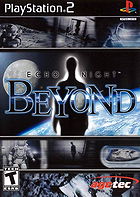 Posted : 14 years, 9 months ago on 2 October 2010 01:32
(A review of Echo Night: Beyond)
Posted : 14 years, 9 months ago on 2 October 2010 01:32
(A review of Echo Night: Beyond)I have to begin this review of [Link removed - login to see] by saying that I am a huge fan of the series. But as much as I love the Echo Night games, I know they're not for everyone. If you enjoyed the first [Link removed - login to see] game on the original Playstation, then you will probably like [Link removed - login to see] as it changes little from the original game's formula.
Beyond begins with a crash landing on a lunar space station. You wake up to find a message scrawled onto the seat in front of you, telling you to go to the facility. You remain in your spacesuit for the rest of the game and a HUD on your helmet gives you information about your battery life and heart rate. The health system in the game involves keeping your heart rate at a safe level. It spikes to dangerous levels when you get near ghosts.
Just as in the first [Link removed - login to see], your goal in this game is to help the ghosts by finding lost mementos or carrying out unfulfilled dying wishes. By doing this, you help them crossover into the otherworld. However, some of the ghosts are angry and must be exorcised or they will hurt you. This is usually done by finding and using key items to calm the ghost down.
The environments in the game are not highly detailed and the puzzles are not difficult. There are much better looking Playstation 2 games out there, and this game doesn't really compete against the likes of Fatal Frame or Silent Hill as far as suspense or horror are concerned. However, it is exactly because of this difference that the Echo Night games succeed. The story is undoubtedly the game's strong point. You are lost on the Moon with few other living souls, trying to find the woman you love. You spend most of your time wandering alone down empty halls or the barren lunar wasteland. And as you progress, the plot carefully culminates in one sad catharsis.
Beyond may not have been terrifying, but it is certainly haunting. Each of its four endings are rewarding in their own way.
Because Beyond is light on the action, relatively weak on graphics, and slow to develop, it will not appeal to people unfamiliar with the franchise. In fact, the game did not sell well and used copies can be picked up at game stores for under $10 USD. But it rightly belongs on the spectrum of survival-horror; or better, it expands the genre by going beyond the usual scare tactics.
Beyond begins with a crash landing on a lunar space station. You wake up to find a message scrawled onto the seat in front of you, telling you to go to the facility. You remain in your spacesuit for the rest of the game and a HUD on your helmet gives you information about your battery life and heart rate. The health system in the game involves keeping your heart rate at a safe level. It spikes to dangerous levels when you get near ghosts.
Just as in the first [Link removed - login to see], your goal in this game is to help the ghosts by finding lost mementos or carrying out unfulfilled dying wishes. By doing this, you help them crossover into the otherworld. However, some of the ghosts are angry and must be exorcised or they will hurt you. This is usually done by finding and using key items to calm the ghost down.
The environments in the game are not highly detailed and the puzzles are not difficult. There are much better looking Playstation 2 games out there, and this game doesn't really compete against the likes of Fatal Frame or Silent Hill as far as suspense or horror are concerned. However, it is exactly because of this difference that the Echo Night games succeed. The story is undoubtedly the game's strong point. You are lost on the Moon with few other living souls, trying to find the woman you love. You spend most of your time wandering alone down empty halls or the barren lunar wasteland. And as you progress, the plot carefully culminates in one sad catharsis.
Beyond may not have been terrifying, but it is certainly haunting. Each of its four endings are rewarding in their own way.
Because Beyond is light on the action, relatively weak on graphics, and slow to develop, it will not appeal to people unfamiliar with the franchise. In fact, the game did not sell well and used copies can be picked up at game stores for under $10 USD. But it rightly belongs on the spectrum of survival-horror; or better, it expands the genre by going beyond the usual scare tactics.
 0 comments, Reply to this entry
0 comments, Reply to this entry
Curse: The Eye of Isis
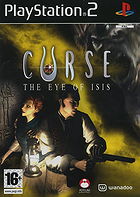 Posted : 14 years, 10 months ago on 10 August 2010 11:44
(A review of Curse: The Eye of Isis )
Posted : 14 years, 10 months ago on 10 August 2010 11:44
(A review of Curse: The Eye of Isis )Curse: The Eye of Isis was a game I had hoped would stand out, but it turned out to be fairly mediocre.
This review is for the PS2 edition, which was available only in PAL regions. In Curse, you play either as Darien Dane or Victoria Sutton, two childhood chums whose parents were colleagues and fellow excavators of Seth's tomb in Egypt. Darien has tried to distance himself from his parents' legacy, especially following the strange misfortunes which befell them after the expedition. Victoria, on the other hand, has followed in her parents' footsteps and became one of the Museum of Great Britain's top contributors. Darien's interest in Egyptology is basically limited to his interest in Victoria. Even though that's obviously the case, don't expect any cheesy romance from the heroes. The game takes place in Victorian England, and men were expected to be proper gentlemen. The costumes and weapons in the game are consistent in reflecting this, with some license of course (there's a "hellish mortar gun").
Graphically, Curse begins on a strong point with a beautifully designed museum level (reminiscent of Haunting Ground), but it collapses afterward with levels that are boring and strictly linear. You'll depend on your map for certain screens because entrances into rooms or passages are simply not visible. You might also find the map (which doesn't have a YOU ARE HERE icon) difficult to navigate and access. The character faces could have been more detailed and the lips made to sync with the voiceovers, but overall that's a minor complaint.
The music in Curse was practically nonexistent. When it was queued, it played only briefly, sometimes cutting off in the middle of a suspenseful sequence. This was undoubtedly a glitch (perhaps only on the Playstation edition), but there's no way it should have escaped the ears of a QA tester. As for the sound effects, they were run-of-the-mill. One high point for the game was the voice acting, which was very good. Unfortunately, the voice track's volume was so low that it was very difficult to hear the actors. The subtitle option was helpful.
The story of Curse is intriguing, but its delivery is weak. The villains in particular have no real motive and are disposed of almost as quickly as they are introduced. There is an interesting, well-hidden twist at the end involving one of the heroes, but the ending is otherwise short and lacking.
The game's controls were relatively easy to manage. The NORMAL setting was very easy. The big complaint I'll make about the controls is the camera. The camera angles are given from fixed points of view, somewhat in the style of Silent Hill. The only problem is that the perspectives are uninteresting and not cinematic at all. In fact, in some of the confined areas, they will get you killed a few times unless you keep your life gauge full. The SHIP level in the game involved some interesting visuals. The level is constantly swaying, like a real ship at sea. If you get motion sick easily, I'd avoid playing it since it's the longest level in the game.
The game's puzzles are a joke. There is no need for a walkthrough whatsoever. The puzzles amount to busy tasks.
Overall, Curse did a fantastic job creating a setting with costumes and the beginning and end levels of the game. I was hoping for a spookier atmosphere, but this game is definitely closer to adventure than horror. There are a few pretty good "Boo!" moments throughout, but sadly nothing that will haunt your dreams. It's a relatively short game (about 8 hours worth of play) with several opportunities to save and replenish life/ammo.
Curse isn't the worst horror game I've played (that would be Clock Tower 3), but it certainly isn't one of the best. For fans of the genre, because of its short game time, I'd recommend it. For gamers in general, however, this is an easily forgettable and non-collectible title, which probably explains why it was never imported Stateside.
EDIT: The worst horror game I have played is now Virus: It is Aware. Clock Tower 3, formerly the worst, is at least 100 times better.
This review is for the PS2 edition, which was available only in PAL regions. In Curse, you play either as Darien Dane or Victoria Sutton, two childhood chums whose parents were colleagues and fellow excavators of Seth's tomb in Egypt. Darien has tried to distance himself from his parents' legacy, especially following the strange misfortunes which befell them after the expedition. Victoria, on the other hand, has followed in her parents' footsteps and became one of the Museum of Great Britain's top contributors. Darien's interest in Egyptology is basically limited to his interest in Victoria. Even though that's obviously the case, don't expect any cheesy romance from the heroes. The game takes place in Victorian England, and men were expected to be proper gentlemen. The costumes and weapons in the game are consistent in reflecting this, with some license of course (there's a "hellish mortar gun").
Graphically, Curse begins on a strong point with a beautifully designed museum level (reminiscent of Haunting Ground), but it collapses afterward with levels that are boring and strictly linear. You'll depend on your map for certain screens because entrances into rooms or passages are simply not visible. You might also find the map (which doesn't have a YOU ARE HERE icon) difficult to navigate and access. The character faces could have been more detailed and the lips made to sync with the voiceovers, but overall that's a minor complaint.
The music in Curse was practically nonexistent. When it was queued, it played only briefly, sometimes cutting off in the middle of a suspenseful sequence. This was undoubtedly a glitch (perhaps only on the Playstation edition), but there's no way it should have escaped the ears of a QA tester. As for the sound effects, they were run-of-the-mill. One high point for the game was the voice acting, which was very good. Unfortunately, the voice track's volume was so low that it was very difficult to hear the actors. The subtitle option was helpful.
The story of Curse is intriguing, but its delivery is weak. The villains in particular have no real motive and are disposed of almost as quickly as they are introduced. There is an interesting, well-hidden twist at the end involving one of the heroes, but the ending is otherwise short and lacking.
The game's controls were relatively easy to manage. The NORMAL setting was very easy. The big complaint I'll make about the controls is the camera. The camera angles are given from fixed points of view, somewhat in the style of Silent Hill. The only problem is that the perspectives are uninteresting and not cinematic at all. In fact, in some of the confined areas, they will get you killed a few times unless you keep your life gauge full. The SHIP level in the game involved some interesting visuals. The level is constantly swaying, like a real ship at sea. If you get motion sick easily, I'd avoid playing it since it's the longest level in the game.
The game's puzzles are a joke. There is no need for a walkthrough whatsoever. The puzzles amount to busy tasks.
Overall, Curse did a fantastic job creating a setting with costumes and the beginning and end levels of the game. I was hoping for a spookier atmosphere, but this game is definitely closer to adventure than horror. There are a few pretty good "Boo!" moments throughout, but sadly nothing that will haunt your dreams. It's a relatively short game (about 8 hours worth of play) with several opportunities to save and replenish life/ammo.
Curse isn't the worst horror game I've played (that would be Clock Tower 3), but it certainly isn't one of the best. For fans of the genre, because of its short game time, I'd recommend it. For gamers in general, however, this is an easily forgettable and non-collectible title, which probably explains why it was never imported Stateside.
EDIT: The worst horror game I have played is now Virus: It is Aware. Clock Tower 3, formerly the worst, is at least 100 times better.
 0 comments, Reply to this entry
0 comments, Reply to this entry
A good point
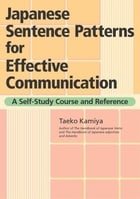 Posted : 15 years, 1 month ago on 8 May 2010 03:44
(A review of Japanese Sentence Patterns for Effective Communication: A Self-Study Course and Reference)
Posted : 15 years, 1 month ago on 8 May 2010 03:44
(A review of Japanese Sentence Patterns for Effective Communication: A Self-Study Course and Reference)A good point about this book I want to add to the description is that all the kanji in the sentence pattern examples are printed with furigana. The sentences are also romanized.
 0 comments, Reply to this entry
0 comments, Reply to this entry
A review
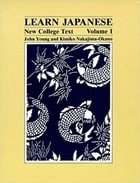 Posted : 15 years, 1 month ago on 8 May 2010 03:37
(A review of Learn Japanese: New College Text (Learn Japanese) volume 1)
Posted : 15 years, 1 month ago on 8 May 2010 03:37
(A review of Learn Japanese: New College Text (Learn Japanese) volume 1)The Learn Japanese: New College Text is 4 volumes from Hawaii University. This was the series I began using for Japanese, but I wish I hadn't. The reason for that is the excessive use of romaji. By the time I finished Volume 1, I was ready for kanji and actual Japanese script. But I was disappointed by Volume 2...then Volume 3...and finally Volume 4. The entire series uses romaji as if that's what it is trying to teach you instead of actual Japanese. Sadly, it does a great job getting vocabulary in your head but it's totally useless for reading and writing unless you have an instructor who gives you the kanji or you spend time transcribing the books (something my sensei made me do). Romaji is a crutch for the baby steps in Japanese. By the time you learn the kana, Volume 1, Chapter 2, the book should have switched to that. Luckily, the end-of-chapter exercises and drills are in japanese. Again, though, the Japanese is dumbed down. Where kanji should be used hiragana is used. A random example to illustrate-
印象的な means interesting or impressive. It's three kanji and the particle な. In the book, it is rendered as いんしょう的な with only one kanji and the rest as hiragana. This never happens in real life! Then in explanations, it's written as romaji "inshouteki na." It has made me want to tear my hair out several times.
Another big complaint I have against Learn Japanese are the analytical diagrams the author gives for explaining social interactions in a live conversation. The pie charts and such are supposed to help you understand the contextual aspect of Japanese, but it will only confuse you. I especially love the chapters on explaining the verb "to give." The explanations are usually too confusing.
I've tried to like this book. I really have. But after four volumes, I wish I had started somewhere else. If you decide to use this series (which you probably won't since your teacher will look at all the ローマ字 and just laugh) then you'll probably need some great companion books. [Link removed - login to see] is one I used.
印象的な means interesting or impressive. It's three kanji and the particle な. In the book, it is rendered as いんしょう的な with only one kanji and the rest as hiragana. This never happens in real life! Then in explanations, it's written as romaji "inshouteki na." It has made me want to tear my hair out several times.
Another big complaint I have against Learn Japanese are the analytical diagrams the author gives for explaining social interactions in a live conversation. The pie charts and such are supposed to help you understand the contextual aspect of Japanese, but it will only confuse you. I especially love the chapters on explaining the verb "to give." The explanations are usually too confusing.
I've tried to like this book. I really have. But after four volumes, I wish I had started somewhere else. If you decide to use this series (which you probably won't since your teacher will look at all the ローマ字 and just laugh) then you'll probably need some great companion books. [Link removed - login to see] is one I used.
 0 comments, Reply to this entry
0 comments, Reply to this entry
Galerians - teenage angst & hyperdermic needles
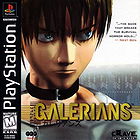 Posted : 15 years, 1 month ago on 8 May 2010 03:15
(A review of Galerians)
Posted : 15 years, 1 month ago on 8 May 2010 03:15
(A review of Galerians)Galerians is a horror-themed action game. It doesn't contain "Boo!" moments like Resident Evil or dark hallways like Silent Hill. But it is a horror game whether people admit it or not.
Story. You are a young teenage boy named Rion. The story begins with you waking up on a strange operating table and trying to figure out why you were there. The voice of a mysterious girl pops into your head from time to time. Your challenge in the first level is to escape the hospital. Afterwards, you team up with the girl and continue unraveling the mystery of the Galerians and their special psychic powers.
Controls & Action. You have no control over the camera in Galerians. This is sometimes frustrating when enemies lurk just around the corner, but for the most part it lends a cinematic feel to the game. It also highlights the details of the environments, which are meant to be creepy. To perform actions, you must use your psychic powers, either sense or one of the drugs you can inject yourself with. Sense gives you hints about all kinds of objects in the game; it's almost like a built in guide. The drugs determine the type of attack you'll execute (force push, fire or gravity). There are also non-attacking drugs. You must also maintain your AP (anger points) which steadily rise regardless of what you do. When the gauge fills up, Rion cannot use any psychic power without "shorting." Shorting is both awesome and a pain in the ass. When Rion shorts, everyone around him dies a gruesome death in the style of Akira (remember the scene in the hospital with guts sliding down the wall?) Unfortunately, when he "shorts" he also loses life until he dies. Finding the pills that counteract this inevitable cycle is a pain in the ass. Rion can only use his powers when drugs are in him, which means you have to spend the whole game looking for drugs and gettin' haaaa-igh.
Mood. There are other characters and NPCs in the game, but they are basically lifeless and used as props. The Hotel level, in particular, is the most horror-inspired. The music for the game fits the levels nicely.
Puzzles. Galerians has several puzzles. Many are challenging but can be solved with a bit of deliberation. Galerians is definitely not a game you can just blast through. Some strategizing and economizing are required.
More. It's 3 discs long, has its frustrating points but has more good than bad. The map system is particularly useful for a PSone game. The menu system, however, is hard to navigate and since it doesn't pause the onscreen action, it makes the game unnecessarily hard at points. Overall, Galerians is a good game. It didn't break the "survival-horror" mold but it added a little twist to it in the same style as Hell Night and Juggernaut. The game is not rare or hard to find. So if you wish to add it to your collection, you should have no trouble tracking down a copy.
Story. You are a young teenage boy named Rion. The story begins with you waking up on a strange operating table and trying to figure out why you were there. The voice of a mysterious girl pops into your head from time to time. Your challenge in the first level is to escape the hospital. Afterwards, you team up with the girl and continue unraveling the mystery of the Galerians and their special psychic powers.
Controls & Action. You have no control over the camera in Galerians. This is sometimes frustrating when enemies lurk just around the corner, but for the most part it lends a cinematic feel to the game. It also highlights the details of the environments, which are meant to be creepy. To perform actions, you must use your psychic powers, either sense or one of the drugs you can inject yourself with. Sense gives you hints about all kinds of objects in the game; it's almost like a built in guide. The drugs determine the type of attack you'll execute (force push, fire or gravity). There are also non-attacking drugs. You must also maintain your AP (anger points) which steadily rise regardless of what you do. When the gauge fills up, Rion cannot use any psychic power without "shorting." Shorting is both awesome and a pain in the ass. When Rion shorts, everyone around him dies a gruesome death in the style of Akira (remember the scene in the hospital with guts sliding down the wall?) Unfortunately, when he "shorts" he also loses life until he dies. Finding the pills that counteract this inevitable cycle is a pain in the ass. Rion can only use his powers when drugs are in him, which means you have to spend the whole game looking for drugs and gettin' haaaa-igh.
Mood. There are other characters and NPCs in the game, but they are basically lifeless and used as props. The Hotel level, in particular, is the most horror-inspired. The music for the game fits the levels nicely.
Puzzles. Galerians has several puzzles. Many are challenging but can be solved with a bit of deliberation. Galerians is definitely not a game you can just blast through. Some strategizing and economizing are required.
More. It's 3 discs long, has its frustrating points but has more good than bad. The map system is particularly useful for a PSone game. The menu system, however, is hard to navigate and since it doesn't pause the onscreen action, it makes the game unnecessarily hard at points. Overall, Galerians is a good game. It didn't break the "survival-horror" mold but it added a little twist to it in the same style as Hell Night and Juggernaut. The game is not rare or hard to find. So if you wish to add it to your collection, you should have no trouble tracking down a copy.
 0 comments, Reply to this entry
0 comments, Reply to this entry
Chaos Break - a fun horror game
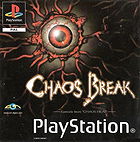 Posted : 15 years, 1 month ago on 8 May 2010 02:59
(A review of Chaos Break)
Posted : 15 years, 1 month ago on 8 May 2010 02:59
(A review of Chaos Break)Chaos Break is from the Japanese arcade game Chaos Heat and the gameplay is similar.
Story. The story involves a renegade lab experiment gone wrong and a group of military specialists who have to go in and investigate. You may have heard this game is like Resident Evil, but that is where the similarity ends. You choose to play as either Rick or Mitsuki (who loves short shorts). From there you investigate the facility in a free-roaming 3-D world.
Controls & Action. If you've played Overblood 2, you will be comfortable with Chaos Break. The action takes place in real time. You have your trusty energy-shot gun, the ammo for which you must find throughout the levels. Then you have your special weapon, which essentially clears the screen when you use it. You also have CQC moves, but these are basically useless against the tougher enemies.
Puzzles. Not bad. They aren't hard.
Mood. I was reminded of The Thing for the PS2 when playing Chaos Break. The monsters are a lot alike. However, I prefer the anime feel of Chaos Break. The environments were not meticulously built to creep you out, but some of them are nice to admire. The voice acting will be the thing that breaks the mood of the game. (Actually I guess that's something else it has in common with Resident Evil.)
Ending(s). Multiple endings for both characters. The endings largely depend on one of the main puzzles in the middle of the game where you must save a female lab technician. To be honest, though, the endings were short and forgettable.
More. Chaos Break is a rare action-horror game for the PS1. It was only released in Japan and Europe. A complete copy will likely run upwards of $20 USD. If PSone horror is your thing (like it is mine), give it a try. It belongs alongside Hell Night and Necronomicon as games that should've been imported to America but never were.
Story. The story involves a renegade lab experiment gone wrong and a group of military specialists who have to go in and investigate. You may have heard this game is like Resident Evil, but that is where the similarity ends. You choose to play as either Rick or Mitsuki (who loves short shorts). From there you investigate the facility in a free-roaming 3-D world.
Controls & Action. If you've played Overblood 2, you will be comfortable with Chaos Break. The action takes place in real time. You have your trusty energy-shot gun, the ammo for which you must find throughout the levels. Then you have your special weapon, which essentially clears the screen when you use it. You also have CQC moves, but these are basically useless against the tougher enemies.
Puzzles. Not bad. They aren't hard.
Mood. I was reminded of The Thing for the PS2 when playing Chaos Break. The monsters are a lot alike. However, I prefer the anime feel of Chaos Break. The environments were not meticulously built to creep you out, but some of them are nice to admire. The voice acting will be the thing that breaks the mood of the game. (Actually I guess that's something else it has in common with Resident Evil.)
Ending(s). Multiple endings for both characters. The endings largely depend on one of the main puzzles in the middle of the game where you must save a female lab technician. To be honest, though, the endings were short and forgettable.
More. Chaos Break is a rare action-horror game for the PS1. It was only released in Japan and Europe. A complete copy will likely run upwards of $20 USD. If PSone horror is your thing (like it is mine), give it a try. It belongs alongside Hell Night and Necronomicon as games that should've been imported to America but never were.
 0 comments, Reply to this entry
0 comments, Reply to this entry
Best Kanji Dictionary I Have Used
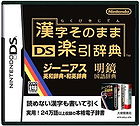 Posted : 15 years, 1 month ago on 6 May 2010 07:31
(A review of Kanji Dictionary: Kanji Sonomama Rakubiki Jiten)
Posted : 15 years, 1 month ago on 6 May 2010 07:31
(A review of Kanji Dictionary: Kanji Sonomama Rakubiki Jiten)The description says it all. This is the most useful electronic dictionary I've ever seen. You use the stylus to write kanji and the game displays the appropriate meanings. It does a great job recognizing handwriting; mine isn't that great, but as long as you write the correct number of strokes and in the correct order, it will recognize. If it does not, you can select a sort of drop-down menu and pick from a group of similar kanji. There are three very minor complaints I have against Sonomama. One is that it doesn't display stroke order like most radical-based dictionaries do. Granted, simply writing the kanji is way, way, WAY faster than using the radical method to look it up in a paper dictionary. But when I come across complex kanji (especially kanji with radicals orders written from right to left), the stroke order would help. Second, some of the kanji must be drawn with a stroke order different than the one I learned from my Kodansha radical dictionary. No big deal. There are only two radicals in question. And third, I wish I could switch the top and bottom screens on the DS. For entries defined in Japanese, words in the definitions that have entries of their own are underlined. If only I could switch screens and click on the underlined kanji like a hypertext jump to another part of the dictionary... All in all, though, these are stupid complaints in light of how useful this dictionary is. It has drastically reduced the time I spend looking up new kanji.
It is only available in Japan, but since DS games are universal you will have no problem playing them on your DS wherever you are. You might see it selling for around $100 on amazon, but I found mine on ebay for less than $50.
It is only available in Japan, but since DS games are universal you will have no problem playing them on your DS wherever you are. You might see it selling for around $100 on amazon, but I found mine on ebay for less than $50.
 0 comments, Reply to this entry
0 comments, Reply to this entry
The One
 Posted : 15 years, 1 month ago on 6 May 2010 07:23
(A review of Arabic-English Dictionary: The Hans Wehr Dictionary of Modern Written Arabic)
Posted : 15 years, 1 month ago on 6 May 2010 07:23
(A review of Arabic-English Dictionary: The Hans Wehr Dictionary of Modern Written Arabic)Hans Wehr is the premier Arabic-English dictionary used by students of Arabic. But you should be familiar with the Arabic root system in order to use it. Each entry contains the Arabic word, a Romanized transliteration of the word, masdars, pronunciation of the root-verb in imperfect tense, definitions, examples and associated particles. Under each root are the derivative forms (sometimes called measures) and their corresponding definitions. Diacritical marks have been omitted, but if you're comfortable with the roots system, they are unnecessary anyway. The Hans Wehr is quite reliable. No other dictionary comes close in terms of usefulness. Take a look at the bibliography of virtually any Arabic language study in recent decades, and you're almost guaranteed to see the Hans Wehr listed. A pocket-size 3/e is also available (ISBN 0879500018).
 0 comments, Reply to this entry
0 comments, Reply to this entry
Add Girth to Your Vocabulary - Learn Usage!
 Posted : 15 years, 1 month ago on 6 May 2010 07:17
(A review of Using Arabic Synonyms)
Posted : 15 years, 1 month ago on 6 May 2010 07:17
(A review of Using Arabic Synonyms)If there's one book you get to enhance your comprehension and vocabulary, make it this one. This is the must-have book for anyone who's been trying to find a good Arabic thesaurus. The book is organized by root, much like an Arabic dictionary; each entry contains its definition, multiple synonyms, and, for each synonym, five or so example sentences taken from authentic materials. By authentic materials, I mean real world media (newspapers, radio broadcasts, internet articles, etc.) and literary sources (novels, stories, etc.). In this way, you're not just learning a static definition of some word but how Arabs use it in written form. You are also learning the subtle differences between synonyms by seeing the usages. The book also rates each synonym based on how often you might find it in the sources listed above. On top of all that, it designates each word with a 1,2, or 3 rating based on how "proper" or "standard" the word is perceived to be. In other words, it lets you know if certain key words are considered educated, "high-level Arabic" or if they're more commonplace. This is something you'd learn on your own in conversation with Arabs, but it's a nice feature for a thesaurus.
 0 comments, Reply to this entry
0 comments, Reply to this entry
 Login
Login
 Home
Home 34 Lists
34 Lists 54 Reviews
54 Reviews Collections
Collections